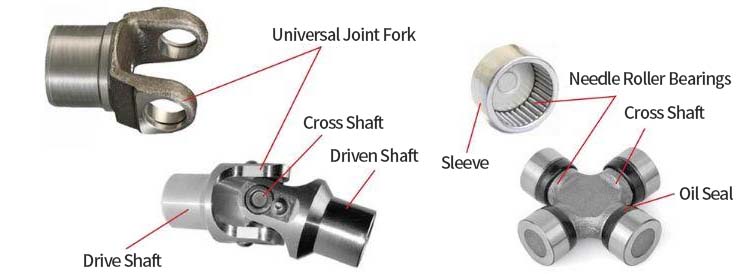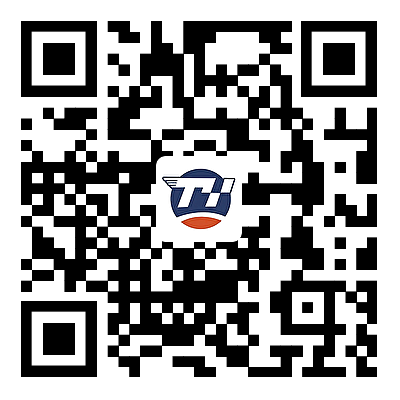- English
- Español
- Português
- русский
- Français
- 日本語
- Deutsch
- tiếng Việt
- Italiano
- Nederlands
- ภาษาไทย
- Polski
- 한국어
- Svenska
- magyar
- Malay
- বাংলা ভাষার
- Dansk
- Suomi
- हिन्दी
- Pilipino
- Türkçe
- Gaeilge
- العربية
- Indonesia
- Norsk
- تمل
- český
- ελληνικά
- український
- Javanese
- فارسی
- தமிழ்
- తెలుగు
- नेपाली
- Burmese
- български
- ລາວ
- Latine
- Қазақша
- Euskal
- Azərbaycan
- Slovenský jazyk
- Македонски
- Lietuvos
- Eesti Keel
- Română
- Slovenski
- मराठी
- Srpski језик
What is a cross-axis universal joint?
2023-11-22
The structure of the cross-axis universal joint.
Shown in the figure is a cross-axis universal joint. Mainly composed of universal joint fork, cross shaft, bearings, etc. The two universal joint shift forks are connected to the main shaft and the driven shaft respectively, and the holes on the shift forks are respectively sleeved on the four journals of the cross shaft. A needle roller and a sleeve are installed between the cross shaft journal and the universal joint fork hole, and screws and bearing caps with locking plates are used for axial positioning. In order to lubricate the bearings, oil passages are drilled on the horizontal shaft and connected to grease fittings and safety valves. The cross-shaft universal joint is composed of a universal joint fork, a cross shaft, needle bearings, oil seals, bushings, bearing caps, etc. During the rotation of the cross-axis universal joint, the needle rollers in the needle roller bearings can rotate to reduce friction. The rotating shaft connected to the input power is called the input shaft, and the rotating shaft that outputs power through the universal joint is called the output shaft.




Why use universal joints?
The main component of the universal transmission device is the universal joint, which is generally composed of a universal joint and a transmission shaft. For segmented drive shafts with long transmission distances, intermediate supports are required. Look carefully: two transmissions can also transmit when their mutual angle changes. Think about the relative position changes between the rear drive axle of the elastic suspension and the transmission output shaft that is relatively fixed on the frame when the car is running? Is it possible to use rigid shafts for transmission? Why is it also used between the steering shaft and the steering gear? Universal driver?
Cross-axis universal joint - allows the maximum intersection angle of two adjacent axes to be 15-20 degrees, and is widely used in automobiles.





